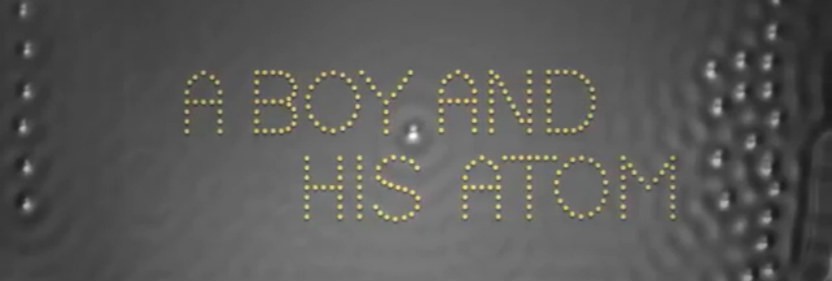Big is beautiful but small can also be mightily impressive – including when it comes to design, illustration or animation on a tiny scale. And I'm not talking about those people on Brighton Pier who write your name on a grain of rice. No, I'm talking about something 100 million times smaller than that.
Earlier this month, researchers at IBM released a movie; and it's now in the Guinness Book of World Records, listed as the world's smallest stop-motion film. Just to blind you with more unbelievable statistics, if 1,000 frames of this movie were laid side by side, they would make up roughly the same width as a human hair.
Featuring an “atomic” boy having fun bouncing a ball and jumping on a trampoline, IBM researchers made A Boy and His Atom by moving and filming individual atoms frame by frame on a copper plate. The result is a rather cute film which one could almost imagine being a regular feature alongside Morph on Take Hart back in the Eighties.
Of course, it's just a fun by-product of atom manipulation – the serious side being the exploration of the limits of data storage. Whereas you're probably reading this blog on a laptop, tablet or desktop computer which requires about a million atoms to store one “bit” of storage (a “bit” being the smallest possible unit of information), IBM recently demonstrated the ability to do the same using just 12 atoms. So the implications are huge – meaning that the world will eventually have devices with virtually unlimited levels of data storage.
Just to put that into more comprehensible terms, that would mean being able to store every movie ever made on a device the size of a fingernail.
By dragging an electrically charged “scanning tunnelling microscope” (STM) one billionth of a meter away from the carbon monoxide atoms, they're made to jump one at a time by means of magnetism. The results might be minuscule, but the hardware involved certainly isn't, weighing two tons and operating at a temperature of -268 degree Celsius.
Andreas Heinrich, Principle Investigator at IBM Research in California describes the process: "The tip of the needle is both our eyes and our hands: it senses the atoms to make images of where the atoms are, and then it is moved closer to the atoms to tug them along the surface to new positions," he explains.
"The atoms hold still at their new positions because they form chemical bonds to the copper atoms in the surface underneath, and that lets us take an image of the whole arrangement of atoms in each frame of the film. Between frames, we carefully move around the atoms to their new positions, and take another image.”
Of the film, Heinrich concludes: “At IBM, researchers don’t just read about science, we do it. This movie is a fun way to share the atomic-scale world while opening up a dialogue with students and others on the new frontiers of maths and science.”
So here are the fruits of two weeks' worth of 18-hour days by IBM's researchers – a strangely endearing 242 frames and 90 seconds of scientific achievement. And to my eye, this is a a much better watch than the technology-rich but content-poor 3D-fest that was Avatar. Basic it might look – simple to create, it certainly wasn't: I give you A Boy and His Atom:
Follow me on Twitter
Connect with me on LinkedIn







Michael Tomes May 20th, 2013, in the afternoon
Really!??? ?!!!That is incredible.